Lawn & Garden Month: 5 Steps to a Lush, Almost Perfect Lawn
Did you know that April is Lawn & Garden month? Last week Tara Rodman-Marine guest blogged about how her garden has added to the value of her home. You can check out her post here: Here’s To Gardens. In her post, Tara talked about the impact that her garden has made on her homeowner experience. […]
Did you know that April is Lawn & Garden month?
Last week Tara Rodman-Marine guest blogged about how her garden has added to the value of her home. You can check out her post here: Here’s To Gardens. In her post, Tara talked about the impact that her garden has made on her homeowner experience.
In honor of Lawn and Garden month, we will post tips through out the month of April to help you prepare your lawn and garden for a beautiful spring. We encourage you to share your green thumb tricks and tips in the comments section.
To kick off this month of great lawn and garden tips I had to share this post I found from American Lawn!
5 Steps to a Lush, Almost Perfect Lawn
1) Get the mowing height right for the right time of year.
There’s a lot more to mowing than just cutting the grass every Saturday. One of the most fundamental steps to a perfect lawn is getting the mowing height right for your type of lawn and for a particular season.
Most grasses can survive with a length of 2″ – 3″. This applies for spring and early fall. In the summer, if possible, set it a little higher*. Never go below the minimum recommended height except for the last mowing of the season which should be around 1.5″ for most turf grasses. There are exceptions to this, but if you have a lawn that requires that exception, you already should know your mowing height.
Mowing height is important because the length of that grass blade is the part that absorbs sunshine which the grass blade then miraculously converts into food! Imagine if you were a blade of grass and got hungry, all you had to do was stand outside and soak up some rays!
There are many that think fertilizer is lawn food, but that’s not true. Plants actually make their own food using sunlight. It needs to grow and develop into a healthy plant.
In fact, fertilizer isn’t even absorbed by the plant as it’s put down on the soil. In laymen’s terms, the fertilizer that gets put down on the lawn must first go through the digestive juices of a lot of tiny microbes that live in the soil. Only then is it in a form that can be absorbed and used by the plant, not as a food, but as building blocks to build more cells and carry on the process of converting carbon dioxide into oxygen.
Never remove more than 1/3 at any one mowing. This may mean you’ll have to mow more often during prime growing times (usually spring and early fall).
Leave the clippings on the lawn after you mow. This not only saves time and energy, but the clippings decompose and add vital nutrients back into the soil. Grass cycling recycles plant nutrients back into the soil. Clippings contain the same beneficial nitrogen, phosphorus and potassium nutrients as that expensive bag of fertilizer. In fact, clippings can provide up to one-third of the annual feeding requirement for your lawn.
2) Use a sharp blade.
The type of mower doesn’t matter, but the blade’s condition does. A dull blade tears at the grass. Take a close look at a grass blade a few days after mowing. If the blade is dull you’ll notice a jagged brown line across the tip of the cut grass. This is a good indication that your blade needs sharpening. Professional mowers sharpen their blades about every 8 hours of use. For most homeowners, twice a year is recommended.
The jagged edges caused by a dull mower blade make it more difficult for the grass to fight off pests and disease.
3) Regulate the water intake
Over watering your lawn causes more damage than a lack of water. Most turf grasses can handle dry spells, but not flooding. Most grasses require 1″ – 1.5″ of water per week. This is enough water to moisten the soil to 4″ – 6″ below the surface for clay soils and 8 – 10″ for sandy soils.
Don’t guess at how much water your lawn is getting. For measuring Mother Nature’s contribution, invest in a rain gauge. If at the end of the week she’s contributed enough, hold off adding more. If she comes up short, you’ll want to add some supplemental watering. Again, measure how much water your sprinkler is putting down.
You’ll have to follow local regulations when there are watering bans, but just remember that less water is acceptable and grass is a very resilient plant. When the rains do return your lawn will come back with a little encouragement on your part.
4) Give your lawn a regular, balanced diet– just don’t over-do it!
Don’t over-fertilize your lawn with too much of a good thing. 4 balanced fertilizer applications a year is plenty: spring, summer, early fall and after the first frost for cool season grasses. If you’re in drought conditions, skip the summer application. Never skip the fall application. It’s important to use lawn products by following label instructions. Get the best results by following the directions. Over application will not improve performance. As mentioned above, fertilizers are processed through their interaction with tiny microbes before they can be used. Over-applying fertilizers can create unfavorable conditions for those microbes, even killing them. When that happens, the soil becomes sterile and the grass won’t grow.
5) Prevention is the best medicine for a healthy lawn
Preventing problems is better than having to correct them. Consistent maintenance is the key. Repair bare spots as needed. Spot treat for weeds with the right herbicide following label directions. Use pre-emergent herbicides for most grassy-type weeds like crabgrass.
Soils can become compacted in high-traffic areas or in areas that have mostly clay soils. Have your lawn aerated once a year, preferably in the fall when soil temperature is around 60 degrees.
For more great lawn tips, check out http://www.american-lawns.com


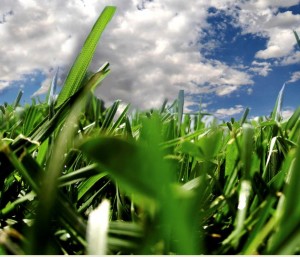

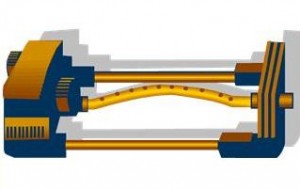


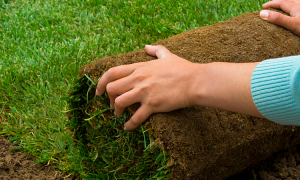
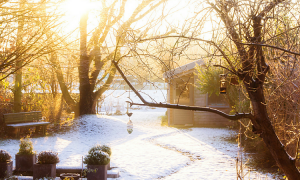
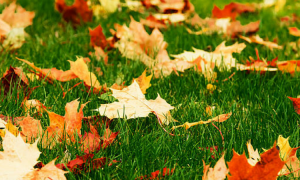
1 Comment
Lawn & Garden Month: Avoid Common Garden Mistakes | Coldwell Banker Blue Matter
April 16, 2012[…] Lawn & Garden Month: 5 Steps to a Lush, Almost Perfect Lawn […]